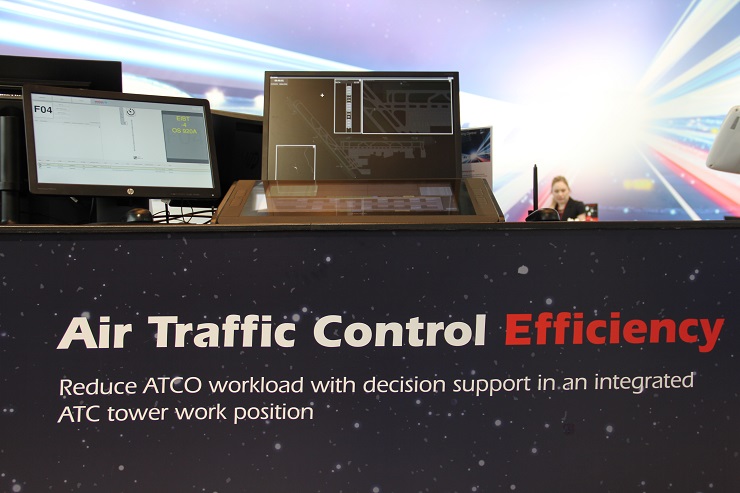Since the early days of aviation, air traffic controllers (ATCO) have suffered from a high number of screens, mimic panels and multiple input devices. The controller is forced to create a mental image of the total situation on the airfield and take appropriate action based on this mental image. With thousands of flights each day this is a very challenging task and the controller will not always be able to make the most optimal decision.
Why not bridge all the separate areas and processes traditionally present at airports?
At World ATM Congress in Madrid Safegate will demo the SafeControlSuite where the system can take on non-critical tasks and provide the controller with operational support throughout the defined workflow. With fewer screens, the controller is allowed to concentrate on a safe and efficient traffic flow. Enhanced safety and reduced workload can lead to increased efficiency not only for air traffic control but for all stakeholders interacting with the flight process; from air traffic control to airline, ground handlers and maintenance staff.
Reduced ATCO workload is one part that can help to free up unused capacity at congested airports where traffic expansion may not otherwise be possible.
Multiple Functions on One Display
The SafeControl suite holds a number of functional modules integrated into one main display, plus one electronic flight progress strip screen, for each working position. The system is integrated to all vital surveillance, planning, control/monitoring, and clearance functionality to provide the controller with needed situational awareness and decision support throughout the operational workflow. It provides different information and functionality based on user area of responsibility and situation.
Systemized Workflow
As an example of systemized workflow, stop bars can be set to be automatically controlled based on the current runway status, location of aircraft in mind and if line up clearance is given by ATCO. Automation removes the need for ATCO to manually turn off the stop bar when the aircraft arrives to the runway entry point, thereby, reducing workload and enforcing the usage of stop bars. This systemized approach can be utilized with any task throughout the workflow where a non-critical activity can be supported by a system instead of putting additional workload on the air traffic controller.
If this sounds interesting to you – you are most welcome to visit us at WATM 2016. Meet us is booth 836 and we´ll be happy to show you SafeControlSuite and discuss how we can help you increase air traffic control efficiency in your tower.
Hope to see you for interesting discussions at World ATM Congress in Madrid!














Leave a Comment